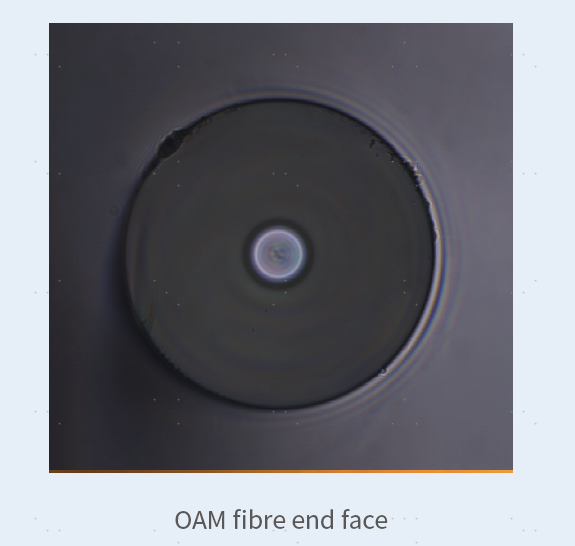- Long-distance trunk communication
- High-capacity mode division multiplexing transmission system
- Laser, sensor
With the development of the Internet, cloud computing, and the Internet of Things(IoT), the demand for network bandwidth in the current information society has increased dramatically. Limited by the nonlinear effect of the single-mode fibre, the foreseeable "bandwidth exhaustion" may come true in the near future. Space division multiplexing is considered to be one of the key technologies that may effectively overcome the capacity crunch of the existing single-mode fibre.
The space division multiplexing technology based on few-mode fibres has shown great potential to improve the transmission capacity of single-fibre communication systems, enabling the capacity increase by tens of times and providing an effective way to solve the capacity bottleneck of optical communication systems in the future. Orbital angular momentum (OAM) fibre is a kind of few-mode fibre. Multi-channel transmission with single-fibre mode division multiplexing technology based on OAM mode is a new method proposed recently to significa ntly expand the information capacity of optical fibre communication.
The OAM fibre developed by YOFC based on the OAM concept is compatible with conventional single- mode fibre in terms of attenuation and geometric properties. Multi-channel signals can be used in one fibre, which can greatly improve the communication capacity to overcome the current transmission capacity limit of single-mode fibre and meet the requirements of OAM fibre transmission systems.
- Precisely controlled refractive index profile, superior geometric properties, and low attenuation
- Well-controlled bending attenuation in the case of small-radius bending
- Low splice loss and high splice efficiency guaranteed by accurate geometrical parameters

- The cross section can be customized
- The number of modes can be customized
- Geometrical and optical parameters can be customized
| OAM Fibre Parameter | Range | Typical value | ||
|---|---|---|---|---|
| Number of Modes | 3rd-to-8th order OAM | - | ||
| Cladding Diameter (μm) | 125 ± 0.7 | - | ||
| Coating Diameter (μm) | 245 ± 5 | - | ||
| Attenuation (dB/km) | ≤ 0.3 | 0.22 | ||
| Dispersion (ps/(nm·km)) | ≤ 25 | 20 - 24 | ||
| Proof Test Level (Kpsi) | 100 - 200 | 100 - 200 | ||
| Tensile Strength (GPa) | F15% | ≥ 3.14 | 5 | |
| F50% | ≥ 3.80 | 5.1 | ||
| Coating Strip Force (N) | Typical Average | 0.8 - 5 | 1.1 | |
| Peak | 0.8 - 8.9 | 1.5 | ||
| Dynamic Fatigue Parameter (nd ) | > 20 | 22 | ||
